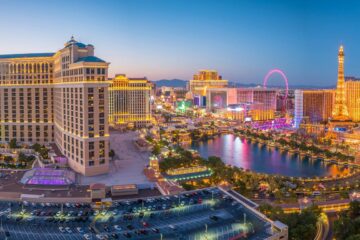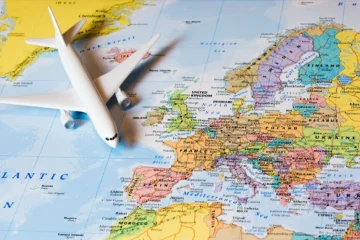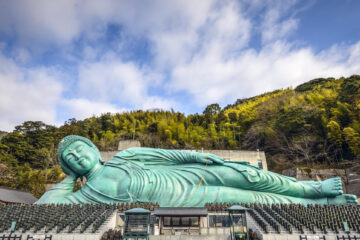Sun, sea, beaches, trulli and centuries-old olive trees. Puglia, a beloved region and a favorite summer destination in Italy and abroad, is certainly all this. But the heel of Italy has an added, intangible value.
It is that strong experiential element that it offers to all its visitors. It is, in fact, a region to be explored with all five senses in order to capture its shapes, sounds, smells and flavors and fully understand the traditions linked to the art, history and culture of this territory.
There are so many places to visit in Puglia, ( cosa vedere in Puglia for Italian People) but if you want to get an idea of ??what it can offer you, we will help you. This land of a thousand faces will involve you in a well-rounded journey through all kinds of settings. From the paradisiacal beaches of Salento to the wild hills of the Itria Valley, passing through the green Foresta Umbra and the Tremiti archipelago, here are the 10 places to absolutely see during a holiday in Puglia .
1. Bari
Your tour of Puglia cannot but start from its capital: Bari .
The first destination to reach in the historic center is the Basilica of San Nicola , the patron saint of the city. Magnificent example of Romanesque-Apulian architecture, in its crypt it houses the relics of the saint and is a pilgrimage destination for the Christian and Orthodox faithful: it is, in fact, one of the few Italian places of worship where the functions of both rites are celebrated .
From the Basilica of San Nicola, enter the narrow streets of Bari Vecchia , the beating heart of the city.
Stroll through this maze of alleys where, especially in via Arcobasso , at the doors of the houses women armed with water, semolina and pastry boards are intent on preparing the famous “stracinet” (orecchiette).
While walking on the “chianche”, the massive stones that pave the lanes of Bari Vecchia, you will come across numerous churches including the Cathedral of San Sabino .
Here, every year, on 21 June (the day of the summer solstice), the sun’s rays pass through the rose window of the facade and illuminate the identical marble rose window on the floor of the nave with 18 petals: a truly unique spectacle.
Do not miss the Fortino di Sant’Antonio Abate with the wall, one of the favorite meeting places of the people of Bari for walking along the Lungomare where it is possible to admire the late Art Nouveau buildings and, at the same time, enjoy an extraordinary view of the Adriatic.
But Bari is not only this: it is a city that will capture not only your eyes, but also your palate with its very tasty food: between panzerotti, fava bean puree, orecchiette with turnip tops and other delicacies you will only be spoiled of choice
2. Lecce
Defined “the Florence of the south”, Lecce is certainly one of the most popular cities for those who decide to take a tour of Puglia.
A real open-air museum, one of the most fascinating in Italy, rich in monuments and works of art from the Roman, medieval and Renaissance periods.
But it is above all the city of stylistic excess and Lecce baroque that finds its maximum expression in the Basilica of Santa Croce .
Its exuberant facade is a riot of decorative patterns and ornaments unique in the world. Admire the large central rose window profiled by bay leaves and berries and, inside, the richly decorated altars and the sumptuous coffered ceiling: you will be amazed!
After visiting the Basilica, continue towards the scenic Piazza Duomo to contemplate the other jewels of the Lecce Baroque: the Duomo (Cathedral of SS. Maria Assunta) with its 72-meter high bell tower, the Bishop’s Palace and the Seminary .
From the Baroque to Roman art: there are 2 main monuments dating back to this era, the Roman theater and the Roman amphitheater , from the 2nd century, which with its elliptical plan was able to accommodate up to 14,000 spectators.
Both the amphitheater and the cathedral are located in the most important square of Lecce, piazza Sant’Oronzo , where the patron saint’s column stands out.
In this square, buildings from different eras and styles coexist harmoniously, such as the Palazzo del Seggio , better known as Sedile, and the churches of San Marco and Santa Maria delle Grazie .
3. Salento peninsula
Located in the southernmost part of Puglia, Salento is one of the most popular seaside destinations for the inhabitants of the beautiful country, a popular destination for summer holidays, chosen every year by thousands of Italian and non-Italian tourists. A condensation of majestic historic buildings and paradisiacal beaches that have nothing to envy to those of the Caribbean.
The Salento peninsula is also an ideal destination for road trips : the best way to explore it is by car, so you can stop in the most suggestive places. A stop not to be missed during a trip to Salento is Santa Maria di Leuca . Located in the southernmost area of ??the peninsula, it is the favorite place for those who want to relax on unspoiled beaches and shores and offers incredible attractions such as the Devil ‘s Cave or the Three Doors Cave .
Did you know that to reach the Maldives you don’t necessarily have to go to the other side of the world? You can find them a stone’s throw from Santa Maria di Leuca, and more precisely in Pescoluse . This stretch of coast is defined as the Maldives of Salento : fine white sand, crystal clear water and an infinite horizon in which to lose your thoughts. What more could you want?
Continue your journey, climbing towards Gallipoli , the ” pearl of the Ionian “, a favorite destination especially for young people as the undisputed queen of the Salento nightlife. If you want to alternate moments of relaxation with unbridled fun, all you have to do is go to one of the many beaches in the city. They are real natural wonders and every year they are confirmed at the top of the Legambiente rankings. Among the most famous beaches are Baia Verde , Punta della Suina and Punta Pizzo .
4. Tremiti Islands
San Domino , San Nicola , Cretaccio and Pianosa and Capraia – not to confuse the last two with the homonymous islands of the Tuscan Archipelago – are the five islands with a wild soul that make up the Tremiti . Turquoise waters, unspoiled nature and spectacular backdrops: these are the main ingredients of the only Italian archipelago in the Adriatic . Of the 5 islands, San Domino and San Nicola are the only ones inhabited; Cretaccio and Capraia can be visited on foot, while Pianosa is part of an Integral Marine Reserve and can only be visited if in possession of special authorizations.
The seabed around the islands is considered a true paradise by diving and snorkeling lovers : they are teeming with fish of all races and sizes and offer extraordinary scenarios made up of underwater caves, inlets and even wrecks. Several underwater itineraries wind through the waters of the archipelago, which is a Protected Marine Reserve of the Gargano National Park , but it is around Capraia that some of the most spectacular diving spots are concentrated, such as Punta Secca and Cala dei Turchi .
Most of the Tremiti beaches are made up of pebbles and rocks, so before setting out for a swim among the steep slopes in the Mediterranean scrub, don’t forget to bring sun protection, shoes and a hat. And why not even a camera, to capture the most beautiful views.
Among the beaches not to be missed in San Domino are Cala Matano and Cala dei Benedettini , while San Nicola offers few rocky areas on which to sunbathe. Capraia boasts pristine coves to be reached by boat or raft: Cala dei Turchi , Cala di Sorrentino and Cala Pietra del Fucile . All the coves and bays of the Tremiti overlook Caribbean waters and the best time for a dip in the sea of ??the archipelago is from May to the end of September – less recommended is the month of August, when they are very crowded.
5. Alberobello
Located in the province of Bari, in the Itria Valley, Alberobello is a place where it is absolutely worth stopping off during a holiday in Puglia. Because in this village with an esoteric charm you can breathe a timeless atmosphere.
Trulli and Alberobello, an inseparable pair. Declared a World Heritage Site by UNESCO in 1996, here these buildings form a unique agglomeration in the world. They consist of a cylindrical base in limestone, whitewashed and surmounted by a conical roof, also in stone. The palette of colors that will open before your eyes will leave you breathless: the white of the walls and the gray of the roofs that stand out against the blue sky.
Most of the trulli are concentrated in the Rione Monti : there are 1030 of all types, all lined up along the edges of the streets. Between one district and another, stop in one of the trullo-restaurants in the city, to taste the typical products of the area. If, on the other hand, you are looking for a truly unique experience, you can spend the night in a trullo and experience the true essence of the region.
6. Ostuni
Set like a white pearl between the sky and the blue sea, Ostuni remains in the hearts of its visitors for the whiteness of the houses that populate its streets. Among the most popular destinations of the Salento peninsula, it is known throughout the world as the ” white city ” for the lime roof that characterizes most of its homes.
Stroll through the historic center, a labyrinth of winding alleys and a succession of squares that climb up the sides of a hill, until you reach the lower part of the village, surrounded by an ancient wall with two doors that have remained intact: Porta Nova and Porta San Demetrio.
In the upper part of the city visit the Cathedral of Santa Maria Assunta , one of the major attractions of Ostuni. Built in 1400, it features a finely decorated facade and a central rose window which is the second largest in Europe . Ostuni is also synonymous with sea and relaxation: Torre Guaceto , Torre Pozzelle , Rosa Marina and Creta Rossa are just some of the beaches that you can find in the city and its surroundings.
7. Caves of Castellana
We move to the south-eastern Murge, to go to the Castellana Caves , one of the main attractions of the Apulian hinterland. Located in the homonymous municipality of Castellana Grotte, a few kilometers from Alberobello, they are one of the most amazing caving complexes of karst origin in Italy .
The entrance to the caves, called Grave , is a cavern about 60 meters deep formed about one hundred million years ago, during the Cretaceous era. At that time Puglia was submerged by the sea and what we see today are the rocky layers that were once on the surface, shaped by rainwater over the centuries.
The Castellana Caves offer two different itineraries : one shorter, of about a kilometer and a half, and the other longer, of 3 kilometers. In addition to the huge chasm called the Grave, along the way you can visit many other caves, all with fantastic names, children of the legends that are told about these places. Walking among stalactites, stalagmites and limestone concretions with the most bizarre shapes, you will pass through the Black Grotto , the Cavern of the Owl , the Cavern of the precipice and many others. Also worth seeing are the crystal pond , the Grand Canyon room and the Leaning Tower of Pisa cavewhich has a stalactite similar in shape to that of the Tuscan monument.
8. Gargano
Stretching out towards the Adriatic, in the northern part of Puglia, there is the Gargano , the promontory also known as the “ Sperone d’Italia ”. What is most striking in this area is the immense variety of landscapes that include forests, mountainous areas, lakes, a coast full of white cliffs, long sandy beaches and villages overlooking the sea.
To protect the territory, the Gargano National Park was established , covered by a dense network of paths and areas equipped for excursions and trekking. In the area there are also two UNESCO sites : Monte Sant’Angelo and the Umbra Forest . The latter is one of the symbolic places of the Gargano, the green lung of the park, which extends over about 10,000 hectares at an altitude of 800 meters. In this nature reserve you will be able to observe a luxuriant vegetation composed mainly of beeches and oaks and specimens of native fauna such as roe deer, foxes, badgers, wild boars, owls and many other species.
Monte Sant’Angelo , on the other hand, is a village located in the southern part of the Gargano and is known above all for the Sanctuary of San Michele . When you have reached it, do not be fooled by appearances: going down a few flights of stairs, in fact, you will be able to access one of the most beautiful sacred caves in the world , the vault of which acts as a ceiling for the great nave and on the sides of which there are several altars, including “The altar of the footprint” whose stone would bear the footprint left by the Archangel.
9. Valle d’Itria
Expanses of centuries-old olive trees on red earth, cacti dotted with prickly pears, dry stone walls, rows that follow one another as far as the eye can see: this and much more is the Itria Valley . It is an area of ??central Puglia between the city of Bari and the provinces of Brindisi and Taranto. The area largely coincides with the southern portion of the Murge plateau and includes Locorotondo, Cisternino and Martina Franca.
Locorotondo , a real jewel with white houses with sharp roofs (called cummerse ), stands on a summit overlooking the Itria Valley. Go to the Villa Comunale to enjoy a spectacular view over an expanse of trulli and olive groves and visit the majestic Church of San Giorgio Martire with its bell tower almost 50 meters high.
Cisternino is one of the most fascinating villages in Italy. Here, too, the municipal villa offers an incredible view of the valley, while on the opposite side you cannot miss the Mother Church of San Nicola and, in the main square, the clock tower. Having an aperitif in the Piazza dell’Orologio is a must and also stopping for dinner: here almost all butchers are transformed into small restaurants and resisting the heady smell of grilled meat will be practically impossible. Absolutely to try the Apulian bombette and local sausages.
The last unmissable stop in the Itria Valley is Martina Franca . The first thing to see is the church of Sant’Antonio and then arrive in the historic center dominated by the Baroque style ducal palace and the Basilica of San Martino . Before leaving the city, don’t forget to taste Martina Franca’s flagship: the capocollo .
Finally, for an even more authentic experience, we recommend staying in the typical buildings of Puglia: the ancient fortified farms often used as hotels. In the Itria Valley, in fact, the watchword is only one: masseria . You can opt for a luxurious masseria or a more traditional one: all of them will immerse you in the most absolute peace among figs, cacti and olive groves.
10. Otranto
Otranto is the easternmost city of the boot . The strength of this charming seaside village is the excellent mix of art, history, culture and nature. Let’s go find out! One of the reasons to stop in Otranto is undoubtedly the Aragonese Castle . Surrounded by defensive walls that protected the city from invaders, it can be visited in the internal parts that include the ramparts, the basements and the towers.
Stroll through the historic center made up of white houses leaning against each other overlooking the cobbled streets between hanging clothes and shops. While you are in the center, allow yourself some time to visit the Cathedral which dates back to the second half of the year one thousand. It is partly dedicated to the memory of the 800 Christian martyrs who, in 1480, were killed during the Turkish invasion – Otranto, in fact, is also known as the “city of martyrs”.
A few kilometers from Otranto, reach the Alimini lakes and let yourself be captivated by the natural beauty of this protected natural park. Here you can observe many species of migratory birds and other animals that inhabit the waters of the lakes. Moving on the coastal side you will find one of the most famous beaches in Otranto: the Baia dei Turchi , so called because it seems to be the place where the Turks landed before invading the area in the 15th century. This uncontaminated area is endowed with an inestimable landscape value, so much so that it has been included by the Fondo per l’Ambiente Italiano in the 100 places to be safeguarded in Italy




